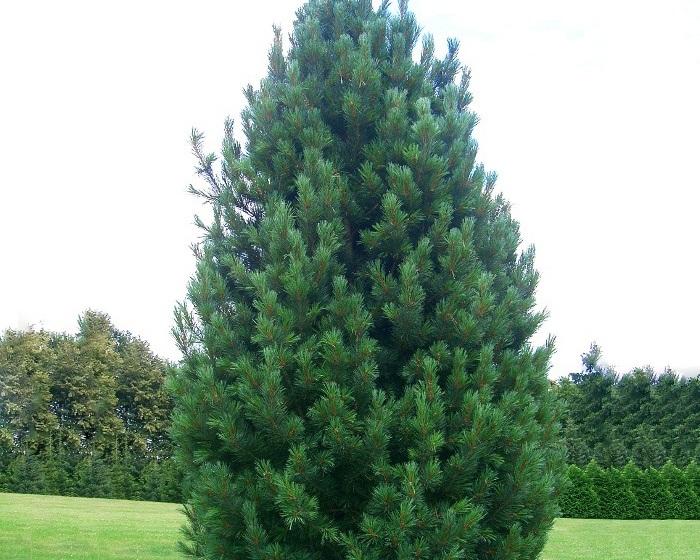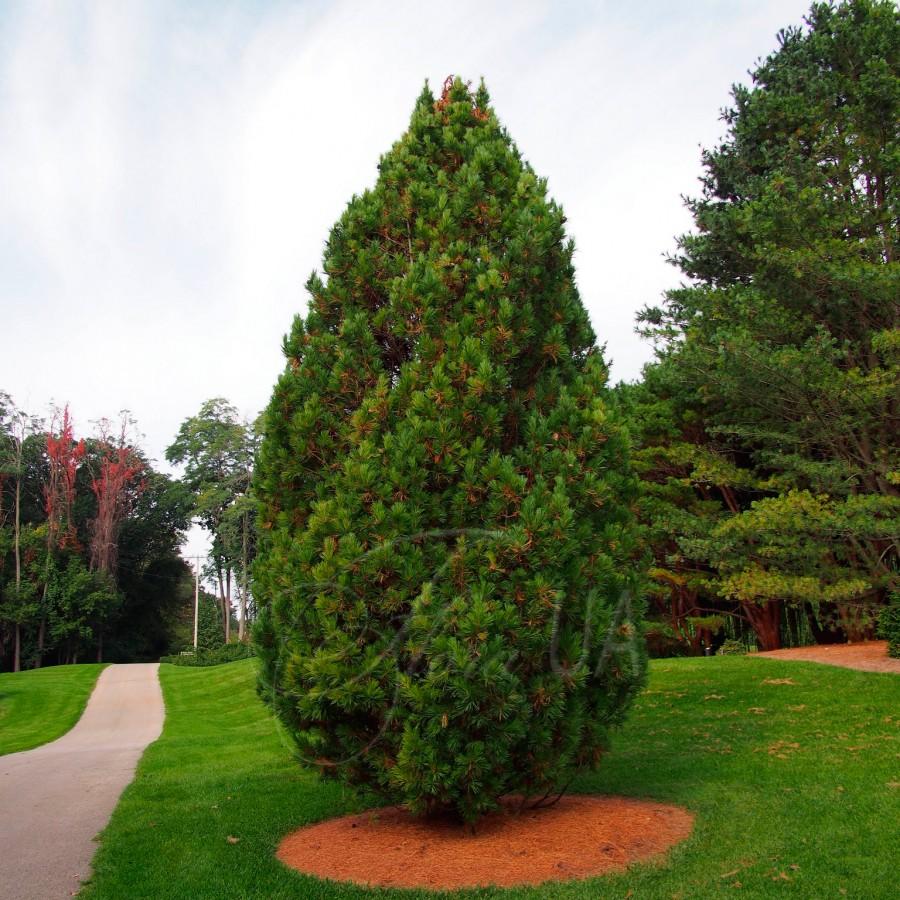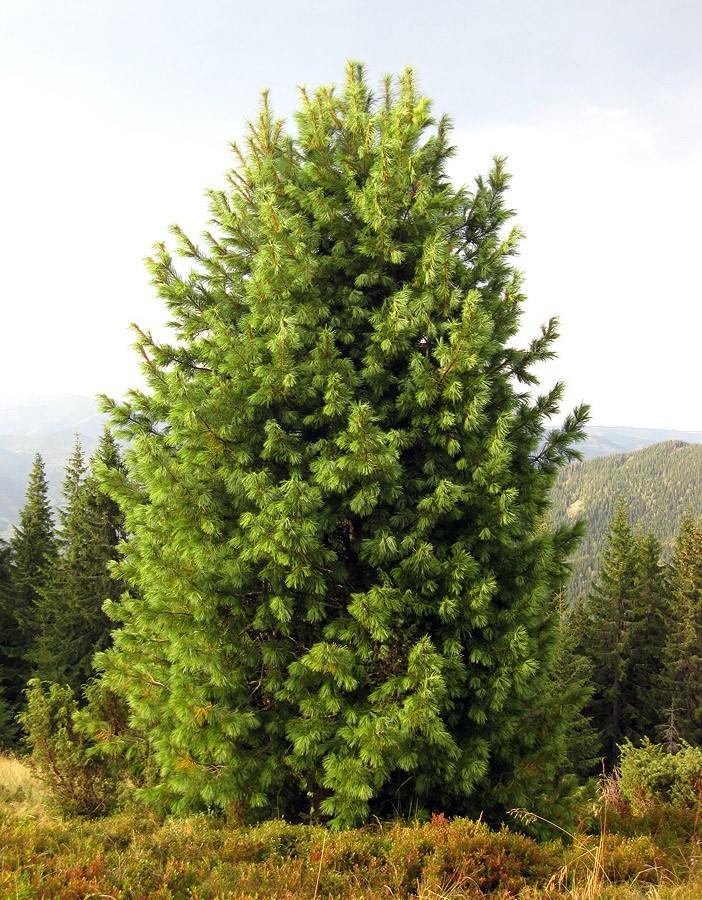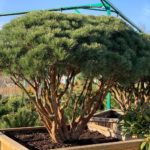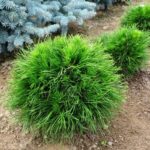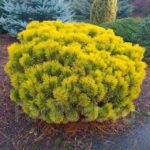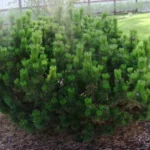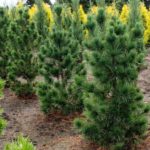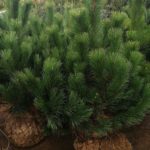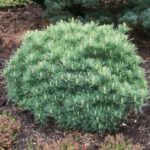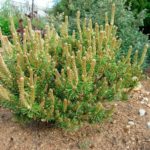The European stone pine is an evergreen crop characterized by a strong trunk and powerful roots. Recently, the plant is increasingly used for landscaping city streets, parks and squares. To get an attractive ornamental crop, it is important to familiarize yourself with certain rules and features of cultivation. In this case, it is necessary to promptly moisten and loosen the soil, prune and mulch.
Description of the tree
European cedar is a slender and massive coniferous tree that has excellent decorative properties. It is characterized by thick green needles, which go well with brown cones. Under natural conditions, this crop is often found in the mountain forests of Central Europe. The plant can be seen in the south of France, in the eastern Alps and Carpathians.
The culture develops well in moderately moist soil. In such conditions, it reaches a height of 26 meters and a width of 8. The crown consists of long needles. Moreover, they have an unusual color - emerald and smoky.
The tree blooms in summer. At the same time, in the first half of autumn, fairly large cones up to 25 centimeters long appear on the branches of the plant. Their maturation occurs only after a year. At this time, seeds up to 12 millimeters in size are formed in the cones. Ripe fruits are dark brown in color.
The plant is characterized by a fairly powerful tap root system. Thanks to this, cedar pine does not require regular watering and can withstand drought very well. The culture is considered undemanding to care. It is unpretentious to soil composition and air humidity. Ephedra is resistant to cold weather, so it can be grown in different regions. Cedar pine is considered a long-liver. It can grow in one place for more than 400 years.
Based on the European cedar pine, breeders managed to create more than 100 ornamental varieties. The most popular and sought-after varieties of culture include the following:
- Columnaris - characterized by a columnar-shaped crown.
- Viridis - the tree is covered with needles of a rich emerald color.
- Aurea - distinguished by the beautiful golden color of its needles.
- Verigata - the tips of the needles have an attractive golden color, and the remaining fragments are covered with spots or stripes.
- Compacta Glauca is a dwarf crop characterized by slow development. Its height is no more than 80 centimeters. On the outside, the tree has greenish-blue needles, and on the inside, it has a snow-white, sky-like color. Another feature of the tree is the vertical arrangement of the shoots.
- Pygmea - this variety is often used to create alpine slides. The height of the crop does not exceed 40-60 centimeters. It is characterized by delicate curved needles that vary in length.
Beneficial features
According to the description, the tree has a wide range of applications. European cedar pine is actively used in the woodworking industry and in medicine. This crop is characterized by strong and durable wood. Therefore, it can be used to make furniture, souvenirs, and dishes. The material is also often used as interior cladding of a house.
In folk medicine, all fragments of culture are actively used, each of which has its own characteristics:
- The seeds are used to make cedar oil, which successfully treats varicose veins.
- Nut shells can be used to combat mastopathy. This product also successfully treats radiculitis, arthritis and osteochondrosis.
- Pine decoction has pronounced diaphoretic properties.
- An infusion of nut shells helps cope with stress. The product also successfully eliminates diseases of the kidneys, liver and stomach.
- Pine resin has pronounced bactericidal characteristics. This allows it to be used for burns, wounds and cuts.
Application in design
Pinus Cembra pine is often used in landscape design.The plant can be used to decorate parks, squares and summer cottages. This culture looks good in single and group plantings. It can be combined with ornamental shrubs and trees.
European cedar pine releases large amounts of oxygen and phytoncides. Thanks to this, the tree helps disinfect the air and saturates it with a pine aroma. This has a good effect on the functioning of the human body.
Planting: step-by-step instructions
Pinus Cembra pine is considered undemanding in terms of care, soil composition and air humidity parameters. To grow a beautiful and useful plant, it is important to properly prepare the site, purchase a high-quality seedling and follow the basic rules for caring for it.
It is recommended to buy a cedar pine seedling from a specialized nursery. It is best to give preference to plants with a closed root system. This helps the crop quickly adapt to new conditions and ensures the growth of powerful roots. In addition, a seedling in a container can be planted at different times of the year - spring, summer and autumn. In order for pine to better adapt to new conditions, it is recommended to give preference to seedlings no older than 3 years.
To preserve the decorative appearance of the needles, it is recommended to plant European pine in an open, well-lit area. This crop is considered undemanding in terms of soil composition. However, it grows and develops well in fertile soil.
It is recommended to use a special substrate for planting the crop. To do this, you need to mix sand, clay and turf in a ratio of 2:1:1.If you plan to plant the crop in heavy loamy soil, it is recommended to provide a drainage layer of sand or crushed brick before planting. Its thickness should be 20 centimeters.
When planting several cedar pines, it is important to maintain distance between them. Its size should be 4-6 meters. It is important that the root system is located freely in the hole. To carry out planting work, it is recommended to do the following:
- Make a planting hole 1 meter deep. In this case, its width should be 1.8 meters.
- Fill the hole with 1 bucket of fertile soil and 10 liters of compost. It is recommended to mix all ingredients well.
- Carefully remove the seedling from the container and straighten the twisted roots. At the same time, it is important to preserve the integrity of the earthen coma.
- Place the plant in a bucket filled with warm water. It is important to ensure that the root system does not dry out when planting.
- Make a small hill in the planting hole and place the seedling on it. In this case, it is important to ensure that the root collar is located at the same level with the surface of the earth.
- Cover the roots with soil. It is recommended to compact each layer thoroughly.
- Water the planted plant generously. It is recommended to use about 5 buckets of warm water for 1 seedling.
- After absorbing moisture, cover the soil with a mulch layer.
When the crown is asymmetrically developed, it is important to position the plant correctly when planting. In this case, it is recommended to direct the less developed side to the south.
Further care
The European stone pine is a drought-resistant crop. The tree tolerates both dry and well-moistened soil equally well. At the same time, at the beginning of spring the crop needs abundant watering.This is due to the awakening of the conifer buds during this period. For 1 young plant it is worth using 50 liters of water.
In hot and arid climates, sprinkling is recommended. This manipulation helps increase air humidity, improve the condition of the crown and make the aroma of the plant more intense.
When growing conifers, it is important to take into account that the crop does not tolerate nitrogen fertilizers. These substances provoke a slowdown in root development. To preserve the decorative appearance of the crown and normal growth of the root system, it is better to apply mixtures based on phosphorus and potassium.
Loosening and mulching
After planting the crop, the tree trunk circle needs to be covered with a mulch layer. Thanks to this, it will be possible to maintain a sufficient level of moisture, ensure the flow of oxygen to the root system, saturate the tree with nutrients and prevent the active development of weeds.
Mulch can consist of pine needles, leaves, bark. It is best to use materials in a crushed state. As organic matter decomposes, the soil is saturated with nutrients and an optimal microclimate for the crop is formed.
It is necessary to loosen the soil as carefully as possible. It is important to work only the top layer of soil. Digging up soil in the tree trunk circle is strictly prohibited. This is due to the superficial location of the root system.
Crown formation
European cedar pine does not require crown formation. However, if necessary, sanitary pruning can be carried out. It is aimed at removing damaged and dry branches. To make the crown denser, it is recommended to shorten annual shoots. This is done by about half.
Preparing for cold weather
The adult crop is resistant to frost. It can withstand even extreme cold and does not need shelter. However, pine pine seedlings may suffer from harsh climates. Therefore, to insulate them, it is recommended to use non-woven materials that allow air to pass through well.
Reproduction
The crop can be propagated by seed or vegetative methods. In the second case, it is necessary to vaccinate against ordinary pine. However, in most cases, gardeners use the seed method.
When European cedar pine is propagated by seeds, it begins to bear fruit only in the 20th year. If grafting is performed, the harvest can be harvested after 7-10 years.
It is important to consider that cedar pine seed material quickly loses its germination capacity. Therefore, it must be planted immediately after collection. This is recommended to be done between the end of September and the beginning of October.
When propagating a crop by seeds, stratification is required. It is recommended to do the following:
- Immerse the planting material in warm water and leave for 4-6 days. The water needs to be changed daily. It is important to consider that the temperature of the liquid should be +25-30 degrees.
- Mix the prepared nuts with peat crumbs. You can also use river sand. The mixture must be left at room temperature. From time to time it needs to be stirred and watered.
After 50-60 days, the seeds will germinate. At this stage, it is permissible to move them to a permanent place. The best option would be a bed with a light and loose substrate. In the second year, seedlings can be planted.
European cedar pine is a fairly common crop that has beneficial properties and is often used in landscape design. In order for the cultivation of a plant to produce results, a number of rules must be followed.


